|
McCloud River Railroad Company
Locomotive #5/#6 Baldwin 0-6-0T+0-6-0T Built- 1900 c/n 17684-17685 Drivers- 40" Cylinders- 11.5x19x20 Weight- 161,400 lbs as a single locomotive, 75,000 lbs. each individual Boiler pressure- 200 lbs. Tractive effort- 35,500 lbs. as a single locomotive, 17,750 lbs. each individual |
|
|
|
The negative experiences with the Heisler #2 apparently did not cure McCloud River management from entering into another locomotive experiment designed to find power big enough to handle heavy lumber trains yet able to negotiate sharp curves and lightly built trackwork, this one with the Baldwin Locomotive Works. Baldwin proposed coupling two 0-6-0T switchers back to back, each one of them a Vauclain compound that pushed the steam through a high pressure cylinder followed by a larger low pressure cylinder instead of the one set of cylinders found on most steam power. These compounds made much more efficient use of steam but incurred substantially higher maintenance costs. Baldwin guaranteed the #6 would haul 125 tons up McCloud's grades, but the locomotive suffered a rash of derailments upon being placed in service, which caused the railroad to split it into two switchers. The pair served the railroad well after the split.
|
|
|
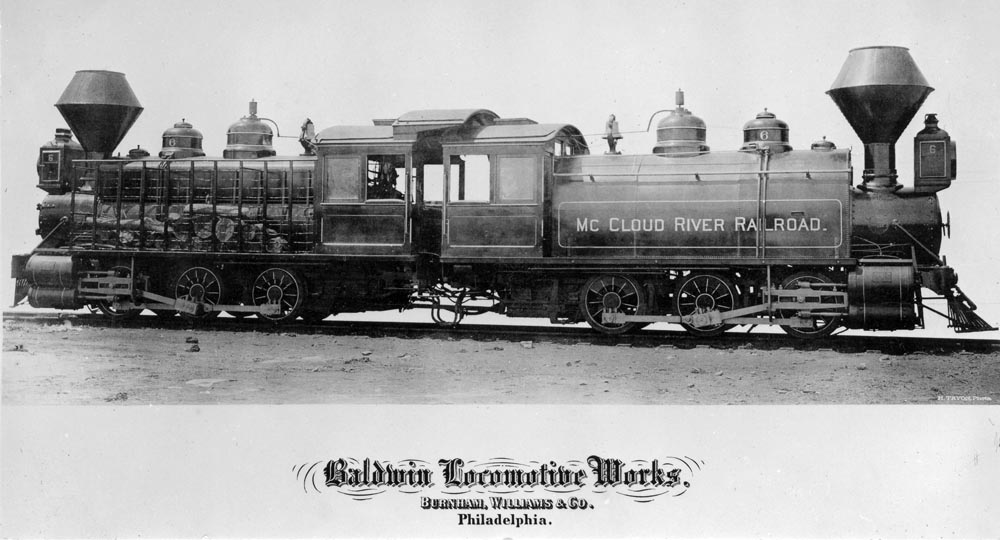 |
|
Builders photo of the #6. Jeff Moore collection.
|
|
|
|
The next 8 images are from Baldwin promotional materials that tout the features of
|
 |
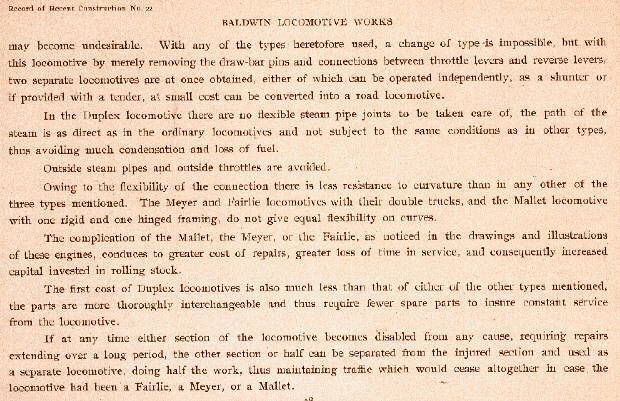 |
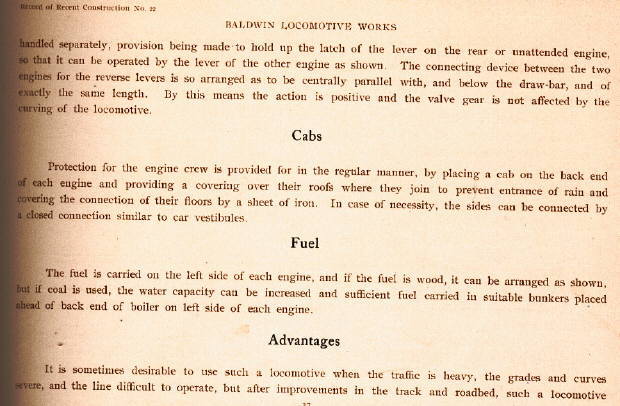 |
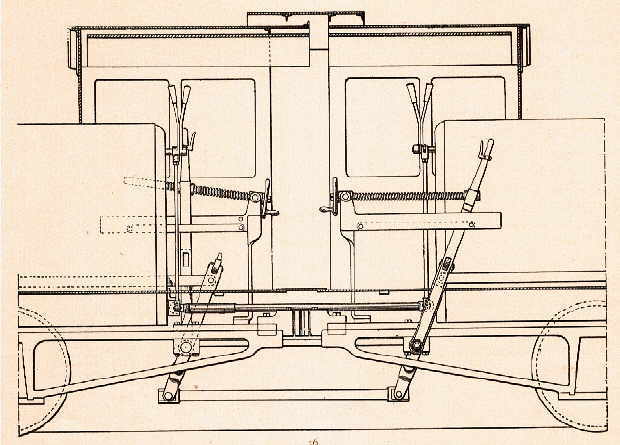 |
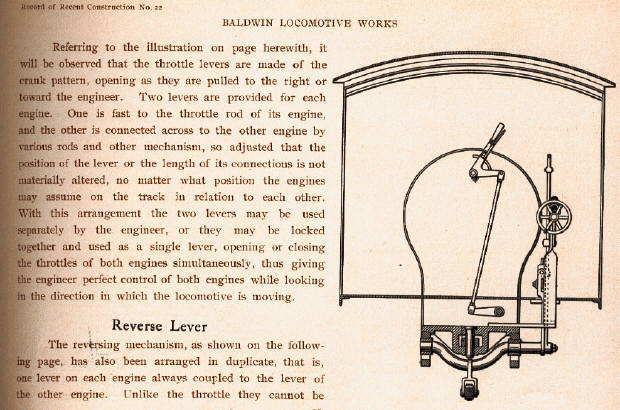 |
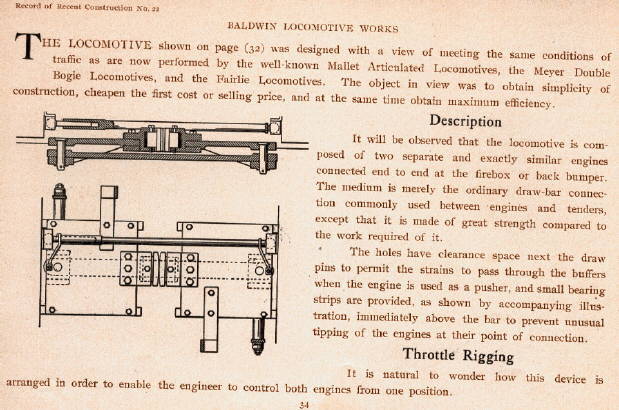 |
 |
|
|
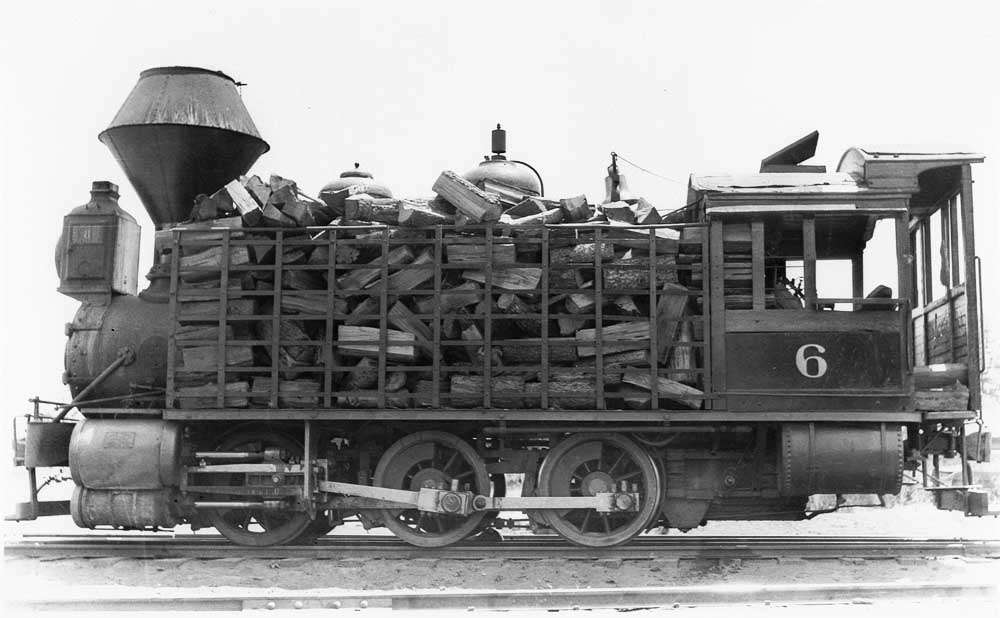 |
|
The #6 after its split from the #5 and before its conversion to oil. Jerry Lamper collection.
|
|
|
|
Two photos of the #6 in the dead line at McCloud awaiting disposition. Photos courtesy of Heritage Junction of McCloud, Inc.
|
 |
 |
|
|
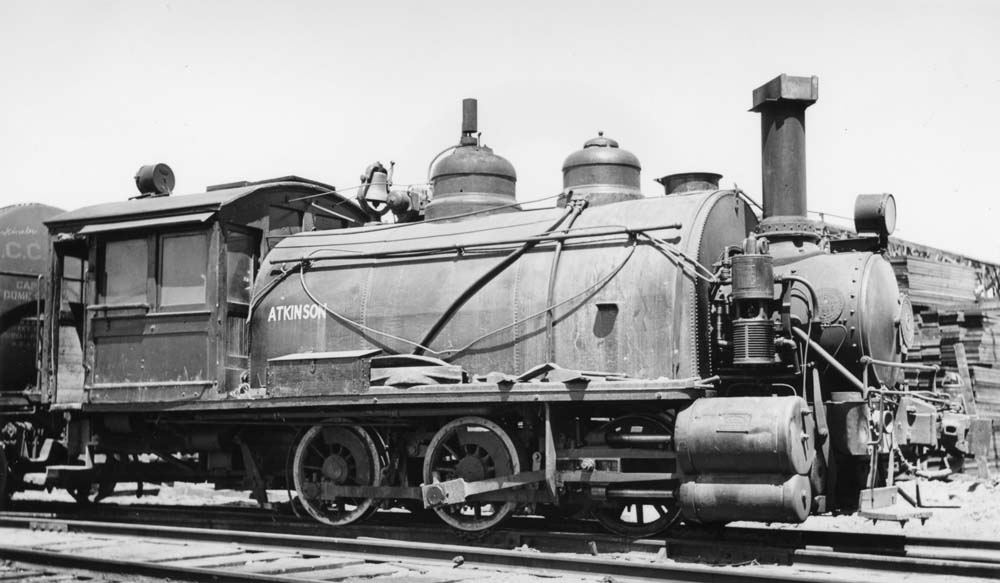 |
|
The #6 after Atkinson Construction Company bought the locomotive. Jeff Moore collection.
|
|
|
|
In the late 1930s Baldwin Magazine ran an article on the former #6's work on Treasure Island. Robby Peartree collection.
|
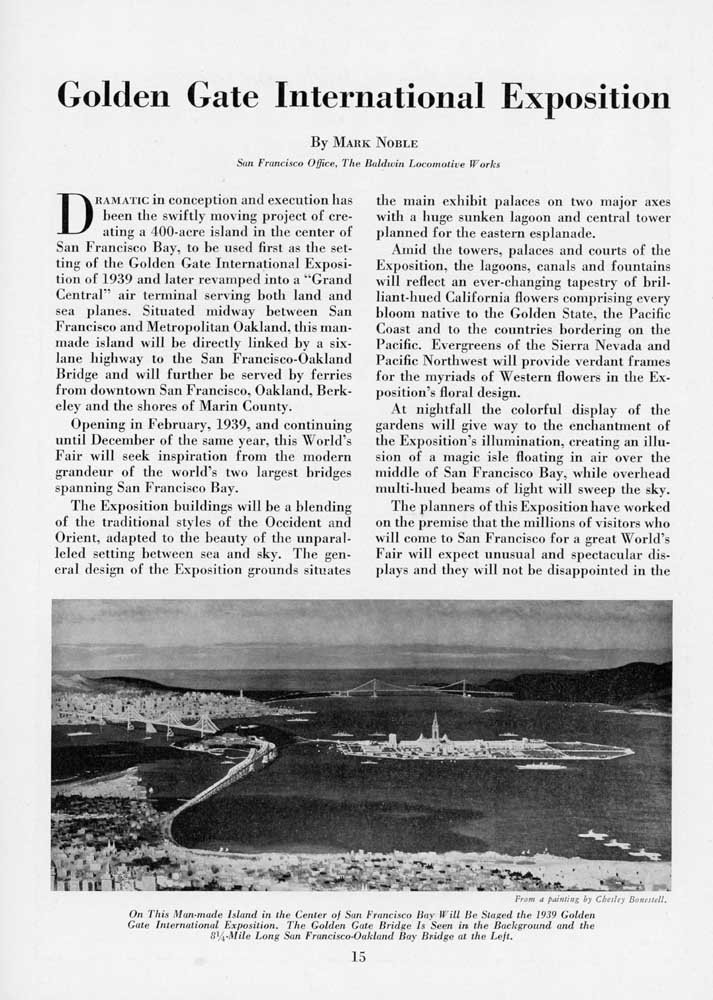 |
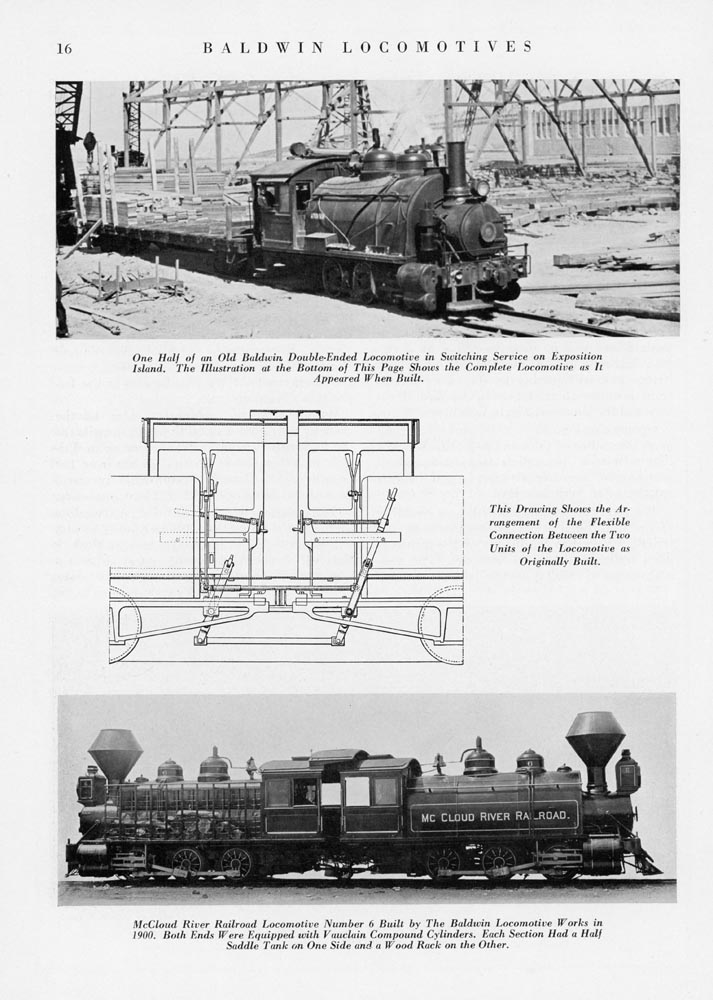 |
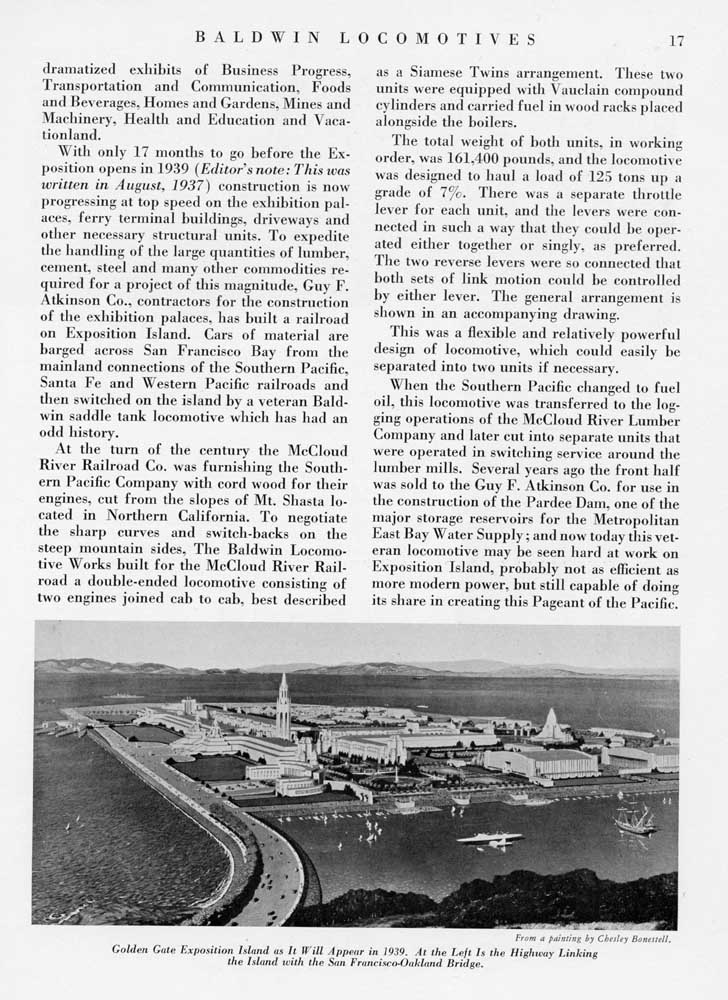 |
|
|
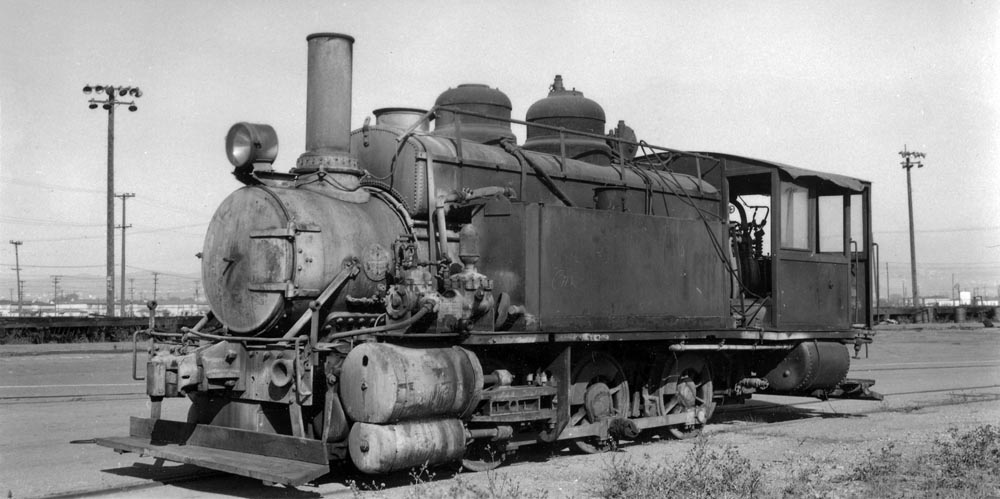 |
|
Last stop for the former #6 was the massive Kaiser shipyards built in Richmond, California, during the early years of
World War II. The locomotive played a central role in the yard turning out 747 ships during the course of the war a record unequalled by any other yard on the planet. This photo shows the
former #6 in Richmond in 1948, a year before it was scrapped. There are rumors of a steam locomotive buried in the area, which if true indicates some part of the #6 might still exist.
Jeff Moore collection.
|
|
|